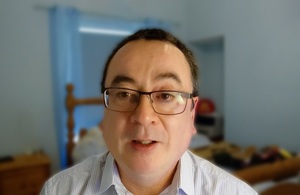Measuring the ‘unmeasurable’: research paper could help Dounreay clean up plutonium legacy
Ground-breaking research published in Nature Communications shows that traces of plutonium in the environment can be identified as being from global or local sources.

Using soil samples taken from Dounreay, an area near to the site and 2 areas at a distance from the site, the research showed that it was possible to identify whether minute traces of plutonium in the soil came from plutonium ‘bred’ in a reactor or from global fallout.
The research was led by Professor Malcolm Joyce and colleagues from Lancaster University alongside Dr Jeremy Andrew from Dounreay and colleagues from ETH Zurich.
Jeremy said that the results could lead to considerable cost and time savings in the decommissioning of Dounreay and other Nuclear Decommissioning Authority sites, as areas of local pollution could be specifically identified, targeted and then assessed for clean-up if required.
He added:
This research demonstrates the benefits of close collaboration between nuclear decommissioning sites and academia. As well as the potential applications of this advanced method in characterisation strategy and planning, we have developed a better understanding of the applicability of a broad range of measurement capabilities, including those available in more routine radiological laboratories.